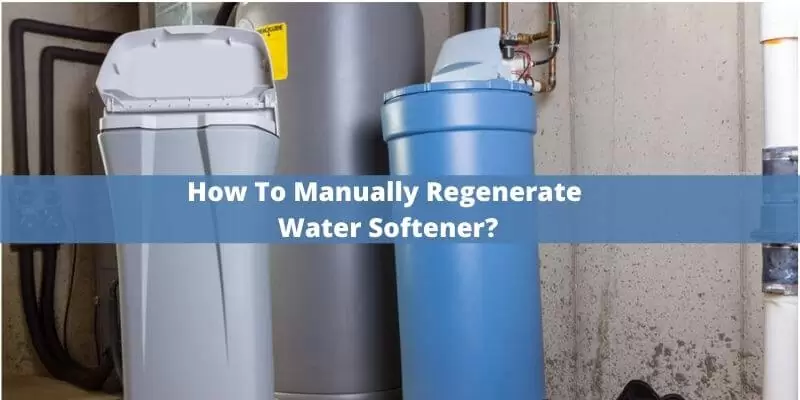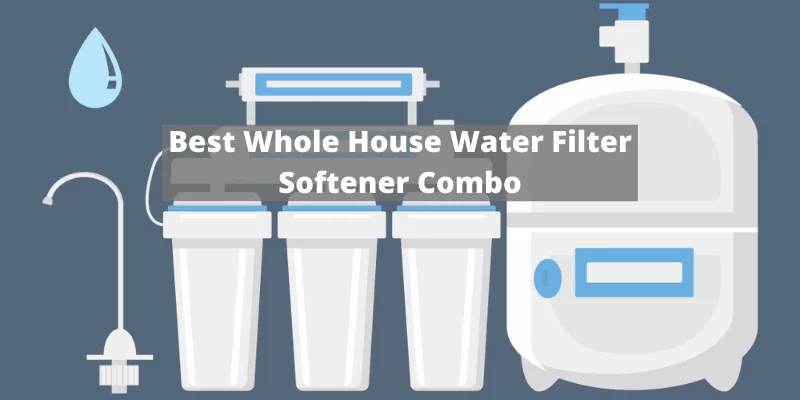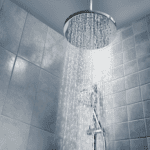Hard water can cause a host of problems, from clogged pipes to spotty dishes. A water softener can help, but what do you do when it stops working? The good news is that you can manually regenerate your water softener, saving yourself time and money in the process. Here’s how.
Step 1: Gather Your Supplies
Before you get started, make sure you have the following supplies:
- Salt
- Bucket
- Wrench or pliers
- Screwdriver
Some Water Softener Systems Have a Button to Start a Manual Regeneration
Some water softener systems come with a button that you can use to start a manual regeneration. If your system has this feature, simply press the button to initiate the regeneration cycle. If not, follow the next steps.
Step 2: Turn off the Water and Power Supply
To ensure your safety and avoid any accidents, turn off the water supply to your water softener. Then, turn off the power supply to your unit. This can usually be done by unplugging it from the electrical outlet.
Step 3: Locate the Control Valve
Find the control valve on your water softener. It will be a small box with a lever or dial on it. This is what you will use to manually regenerate the unit.
Step 4: Initiate the Regeneration Cycle
Using your wrench or pliers, turn the lever or dial on the control valve to initiate the regeneration cycle. This will cause the unit to flush out the accumulated hardness minerals and replace them with salt.
Step 5: Fill the Salt Tank
Once the regeneration cycle has started, fill the salt tank with the appropriate amount of salt. This information can usually be found in your water softener’s manual.
Step 6: Complete the Regeneration Cycle
Let the regeneration cycle run its course, which typically takes between 1-2 hours. During this time, do not turn off the power supply or interrupt the cycle in any way.
Step 7: Turn the Water and Power Supply Back On
Once the regeneration cycle is complete, turn the water and power supply back on. Your water softener should now be fully regenerated and ready to use.
In conclusion, manually regenerating your water softener is a simple process that can save you time and money. By following these steps, you can ensure that your unit is working properly and your water stays soft. Happy softening!
Why do I need to manually regenerate my water softener?
Regenerating a water softener is necessary to remove accumulated minerals, such as calcium and magnesium, which make the water “hard. Hard water can cause buildup in pipes and appliances, making them less efficient and shortening their lifespan. By regenerating the water softener, you are cleaning the resin bed, which is the main component of the softener that removes these minerals. It also helps to restore the softener’s efficiency and ensure that it continues to produce soft water for your home. Additionally, regular regeneration helps prolong the lifespan of your water softener, ensuring that it works effectively for years to come.
In addition to regular regeneration, you may also need to change the salt or filters in your water softener. Salt is used to recharge the resin bed in the water softener, so it is important to ensure that you have enough salt to complete a full regeneration cycle. If the salt level is low, it may not effectively remove the minerals from the water. The filters in the water softener can also become clogged over time, reducing its efficiency and the quality of the soft water it produces. Replacing the filters regularly helps to ensure that the water softener is working at its best and producing the highest quality soft water for your home. It is a good practice to check the salt and filters periodically and replace them as needed to maintain the performance and longevity of your water softener.
Maintenance Tips for Water Softeners
To keep your water softener in good working order, follow these maintenance tips:
- Check salt levels regularly and refill as needed
- Clean the unit regularly to remove any buildup or debris
- Check for leaks and fix them promptly
- Replace the resin bed when it becomes clogged or saturated
Benefits of Having a Water Softener
Having a water softener has many benefits, including:
- Improved water quality: Soft water tastes better and is better for your skin and hair
- Longer lifespan for appliances: Hard water can cause mineral buildup in appliances, reducing their lifespan
- Reduced buildup in pipes: Soft water reduces mineral buildup in pipes, reducing the risk of clogs and leaks
Common Issues with Water Softeners and How to Resolve Them
Some common issues with water softeners and how to resolve them include:
- No water flow: Check for clogs in the pipes or a malfunctioning pump
- Inconsistent water softness: Check salt levels and adjust as needed
- Strange noises: Check for leaks or loose parts and tighten as needed
When to Call a Professional for Water Softener Repair
If you encounter any of the following issues with your water softener, it is best to seek professional help:
- Leaks in the unit: A leak can be dangerous and can cause damage to your home. A professional will be able to diagnose and repair the leak quickly and safely.
- Complete loss of water pressure: This can be a sign of a serious problem, such as a clogged or damaged resin bed. A professional will be able to diagnose and repair the issue, restoring your water pressure.
- Inability to manually regenerate the unit: If you have tried all the steps in this article and are still unable to manually regenerate your water softener, it may be time to call a professional. They will be able to diagnose and repair any issues with your unit.
Conclusion
Manually regenerating your water softener is a simple process that can save you time and money. By following the steps outlined in this article, you can keep your water softener running smoothly and ensure that you have soft, clean water in your home. If you encounter any problems with your unit, don’t hesitate to call a professional for help. With regular maintenance and a little know-how, your water softener can provide you with years of reliable service.









